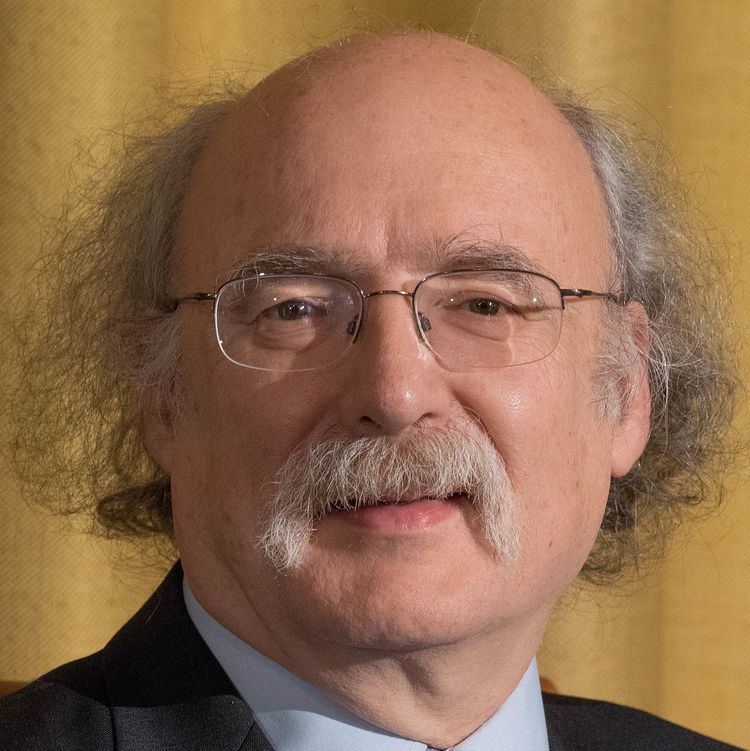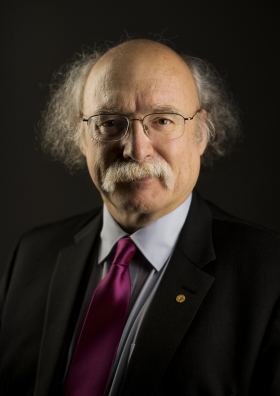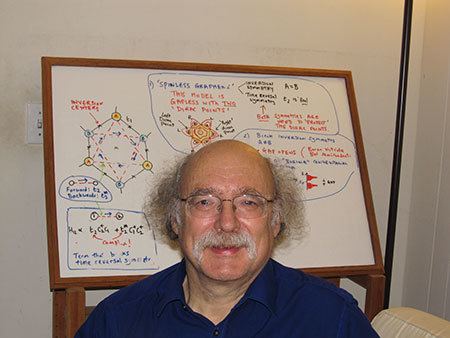Name Duncan Haldane | Fields Condensed matter physics | |
 | ||
Institutions Princeton UniversityBell Laboratories Notable awards Oliver E. Buckley Condensed Matter Prize | ||
Day 4 theoretical physics session duncan haldane
Frederick Duncan Michael Haldane (born 14 September 1951), known as F. Duncan Haldane, is a British born physicist who is Eugene Higgins Professor of Physics at the physics department of Princeton University, and a Distinguished Visiting Research Chair at Perimeter Institute for Theoretical Physics. He won the 2016 Nobel Prize in Physics with David J. Thouless and John Michael Kosterlitz.
Contents
- Day 4 theoretical physics session duncan haldane
- Pitp 2015 quantum geometry in the fractional quantum hall effect duncan haldane
- Education
- Career and research
- Awards and honours
- Personal life
- References

Pitp 2015 quantum geometry in the fractional quantum hall effect duncan haldane
Education

Haldane was educated at St Paul's School, London and Christ's College, Cambridge where he was awarded a Bachelor of Arts degree followed by a PhD in 1978 for research supervised by Philip Warren Anderson.
Career and research
Haldane worked as a physicist at Institut Laue–Langevin in France between 1977 and 1981, before joining the University of Southern California. Haldane is known for a wide variety of fundamental contributions to condensed matter physics including the theory of Luttinger liquids, the theory of one-dimensional spin chains, the theory of fractional quantum hall effect, exclusion statistics, entanglement spectra and much more.

As of 2011 he is developing a new geometric description of the fractional quantum Hall effect that introduces the "shape" of the "composite boson", described by a "unimodular" (determinant 1) spatial metric-tensor field as the fundamental collective degree of freedom of Fractional quantum Hall effect (FQHE) states. This new "Chern-Simons + quantum geometry" description is a replacement for the "Chern-Simons + Ginzburg-Landau" paradigm introduced c.1990. Unlike its predecessor, it provides a description of the FQHE collective mode that agrees with the Girvin-Macdonald-Platzman "single-mode approximation".
Awards and honours

Haldane was elected a Fellow of the Royal Society (FRS) in 1996 and a Fellow of the American Academy of Arts and Sciences (Boston) in 1992; a Fellow of the American Physical Society (1986) and a Fellow of the Institute of Physics (1996) (UK); a Fellow of the American Association for the Advancement of Science (2001). He was awarded the Oliver E. Buckley Prize of the American Physical Society (1993); Alfred P. Sloan Foundation Research Fellow (1984–88); Lorentz Chair (2008), Dirac Medal (2012); Doctor Honoris Causae of the Université de Cergy-Pontoise (2015) and Nobel Prize in Physics (2016).
Personal life
Haldane is a British citizen and United States permanent resident. Haldane and his wife, Odile Belmont, live in Princeton, New Jersey.
